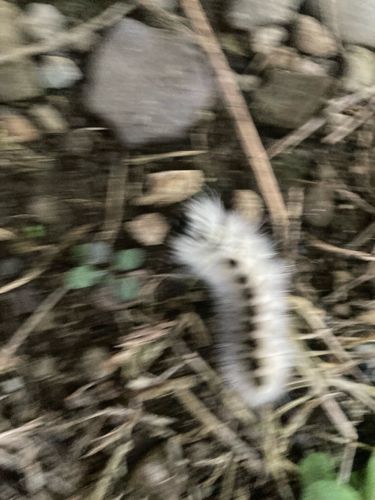Fall Webworm
Scientific Name: Hyphantria cunea
Order & Family: Lepidoptera, Erebidae
Size: Larvae (caterpillars) can reach up to 1 inch (2.5 cm) in length. Adult moths have a wingspan of 1.2 to 1.6 inches (3-4 cm).

Natural Habitat
Deciduous trees, orchards, forests, and urban landscapes. They are typically found on the leaves of host trees.
Diet & Feeding
The larvae are herbivorous, feeding on the leaves of a wide variety of deciduous trees, including mulberry, pecan, walnut, cherry, and maple. Adults do not feed.
Behavior Patterns
Fall webworms are known for constructing large, silken webs that enclose foliage, usually at the ends of branches. Inside these communal webs, the caterpillars feed, molt, and are protected from predators. They can have one to four generations a year depending on the climate. The adult moths are typically white and nocturnal.
Risks & Benefits
Risks: Large infestations can defoliate trees, causing aesthetic damage and, in severe cases, weakening trees, making them more susceptible to other stressors. They are generally not harmful to humans, though some people may experience skin irritation if they come into contact with the hairs. Benefits: They can serve as a food source for various birds and predatory insects. In most healthy ecosystems, their populations are kept in check by natural enemies.
Identified on: 9/26/2025